Stucco decoration or frozen gypsum music
Stucco molding on the ceilings and walls, the bas-relief technique have become so popular that looking at the photo, I want to immediately try out artistic abilities and do some repairs myself. You can start in a place that is not immediately striking, so to speak, to perform a test of the pen and practice.
To engage in calligraphy and risk performing stucco work in prominent places will help the knowledge acquired in video tutorials. How can this work be done, if not at the specialist level, then at least at the level of a diligent beginner can be viewed in text articles.
The content of the article
What is stucco molding
The associative perception of the word stucco is associated with vaults of locks, columns (seeColumn decoration: doing it right), huge buildings with stucco moldings of past centuries. Nothing good is lost over time, but on the contrary acquires new properties and is improved in terms of simplifying technological processes.
Therefore, wall decoration with stucco molding and its use in the interior helps to transform the interior and use various elements for decoration.
So:
- Ceiling decor means stucco profiles, baskets, details of individual parts of trees, sockets. From sockets framing lamps, chandeliers.
Baskets are used not only in the form of decorations, but to give a visual height to the ceilings or to mask the lighting elements and generalize the interior of the room. - Ceiling stucco is divided into gypsum, hand and artificial materials. Details of stucco molding from artificial materials are purchased in stores, gypsum elements are custom-made, and hand stucco work is performed by craftsmen directly on the work surface.
- Each type of stucco molding has its own characteristics, advantages and disadvantages.
- Stucco made of gypsum is made from a natural and environmentally friendly product that does not support combustion, but it has significant weight.
- All chips and cracks of gypsum products that arise during installation and transportation can be eliminated during operation by coating with gypsum mortar and neat grinding.
- The material is hygroscopic, it has the ability to absorb moisture, but this can be avoided if the pre-paint is pre-painted.
- Stucco molding made of artificial materials is elastic, the best qualities of gypsum binders and polymer additives are inherent in it, giving frost resistance, hardness and the ability to minimize water absorption. These properties allow you to decorate not quite even surfaces, it is convenient and easy to install and at the same time remains a “living”, “breathing” material with a high-strength, washable surface.
Attention: When choosing stucco molding, the height of the room is taken into account, the larger it is, the larger the stucco molding is used for installation and vice versa. The main principle is maintaining proportionality.
Stucco molding on the ceiling
Ceiling decoration stucco molding should be carried out by qualified specialists, after all, work on the ceiling requires building experience and skill of performers.
So:
- Initially, the surface is prepared for work.
- Old wallpaper or plaster is removed, the ceiling is leveled with a new mortar.
- Marking is applied for mounting parts, which eliminates the inconsistency of the elements.
- The surface of the ceiling and the back of the gypsum parts are roughened with the help of notches to increase the bonding strength.
- The decor is mounted on bolts, nails, screws, and the space between the elements and the ceiling is filled with gypsum mortar, which allows you to get a better fit.
- Mounting the ceiling skirting.
- All holes from fasteners and joints are sealed with gypsum mortar, which dries for at least three days.
- After complete drying, the stucco is painted directly on the ceiling.
Stucco painting on the ceiling
Painting, as the most common type of finish, is divided into a traditional and modern type:
- Traditional coloring is maintained in the color scheme of the entire interior and corresponds to it.
- Modern, it also refers to alternative coloring, is distinguished by the use of mosaic paint, which creates the effect of granite.
The mass of paint consists of multi-colored bubbles bursting in contact with the surface of the gypsum. This creates a multicolor pattern. - The application of paint is carried out by a spray gun, stencils with various patterns can be used to give originality. There are many different dyes to obtain antique effects, marble, imitation of wooden surfaces.
- Staining with luminescent paints allows you to get a stucco glow in the dark.
- Paints with pearlescent tints create the effect of a “chameleon".
- The old coating is obtained by removing with a sponge, rags a little paint on the convex places of the product.
- The effect of watercolor is achieved by applying paints in two colors. On the layer of dried paint, another is applied and spread so that the lower layer of paint appears.
- It is not unusual that the decoration of stucco gypsum is gaining popularity again and becoming an integral part of the modern design of the ceilings of various rooms.
Caution: Any water-soluble, emulsion paint for the ceiling can be applied to a completely dried, cleaned and primed gypsum product.
How to decorate the walls with stucco molding
For walls, usually 6 types of artificial stucco molding are used:
- The moldings are simple and embossed.
- Corner elements.
- Separately executed ornaments.
- Brackets.
- Niches.
- Half Columns.
Stucco made of duropolymer and polyurethane looks very similar to each other. Installation work reveals the difference between the two.
After a couple of years, the duropolymer does not lose its appearance, and moldings from other manufacturers can shrink. Before you start decorating the walls with stucco work, preparatory work is performed.
So:
- The walls should be flat, putty and treated with deep penetration putty.
- Gypsum stucco decoration begins with preliminary marking on the wall with a level, tape measure and pencil.
- All dimensions obtained are transferred to the moldings, the places of cuts are measured to connect the corners.
- When sawing the molding, the only minus of the duropolymer is revealed, when there are burrs on the cut and they can be present on the workpiece itself. Polyurethane products do not.
Attention:
Burrs can be removed with solvent 650 and the inside will be carefully degreased to prevent solvent from getting on the outside so as not to damage the surface. This operation is advisory in nature, manufacturers offer to simply clean from dirt.
- Mounting adhesive is applied to the cleaned and degreased inner surface. It is important to distribute the glue evenly along the entire length of the edge, which will be in contact with the wall.
- Stucco is applied to the wall and pressed tightly. Excess glue is immediately removed with a spatula.
The main rule when sticking stucco molding is to never work with walls that have not completely dried out. “Hurry, you make people laugh,” and here the items can peel off the wall. - The connections between the elements are always glued with a special docking adhesive, the manufacturers instructions are often on the packaging.
- Docking adhesive is applied in excess to the surface and docked with stucco, previously glued to the wall.
Excess glue should be squeezed out, and the products should be pulled as close to each other as possible. Some craftsmen prefer to additionally connect the parts with brackets of a furniture stapler. - After the glue has completely dried, but not earlier than one day, its excess is removed with a very sharp knife. The work belongs to the category of painstaking and neat tricks.
- Stucco molding of gypsum is plastered at all joints and adjacencies to the wall, it is almost ready.
- Waiting for complete drying, you can start processing with a fine-grained skin.
A day after installation, staining with acetone-free paints is performed. Remember that the joints are first painted over.
How to decorate stucco surface
Polyurethane stucco molding belongs to the universal decorating material. It easily fits into the interior of any style, goes well with other finishing materials.
Polyurethane blanks are sold in regular stores. The price for them is affordable to a wide consumer, we can say more that the work can be done even by a novice and is worth a try.
So:
- From the purchased workpiece, which are produced for a specific plot and size, with simple tools from a set of an engraver and a jigsaw, elements for gluing are formed.
- Using a jigsaw, the excess parts of the workpiece are removed in straight lines, and a fragment with smooth and soft bends is formed.
- Then finer work is carried out with a household engraving machine, its corners and protrusions on the workpiece are removed.
- The final refinement is carried out by a machine with a nozzle for grinding. You can sandpaper with sandpaper, but this is a lengthy process.
- The workpiece is made thinner every two, otherwise it looks rude. The machine cuts thin lines on the reverse side and, palming a sharp knife, removes excess thickness in pieces.
- From the received elements the necessary drawing is made. Each element is glued to ordinary glue for these products and, after drying, it is painted to match the wall.
It is not necessary to attribute a polyurethane stucco molding to a decor of an economy class. European firms provide their branded products.
The quality of this product is clearly presented by the distinctive features of the details. High-quality stucco molding, which differs from Chinese manufacturers, does not shrink, does not expand with temperature changes, does not crack with time and does not give gaps at the joints, has a light weight.
Mounted on a special glue on the principle of liquid nails.
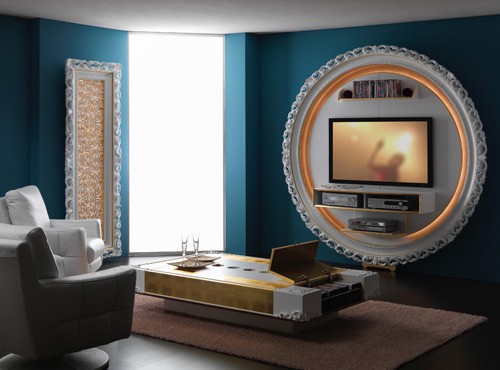
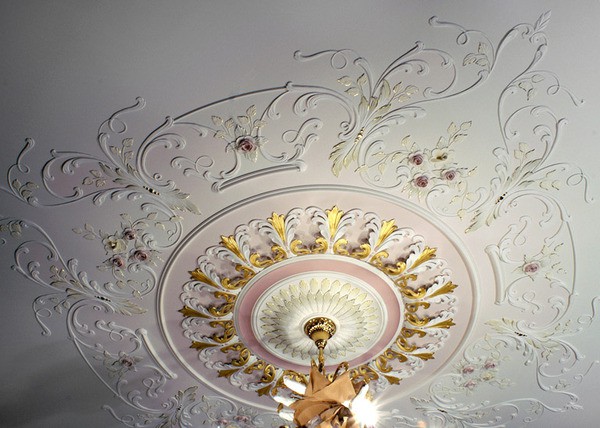

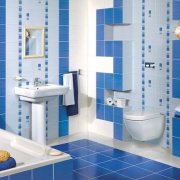

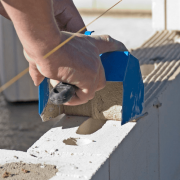
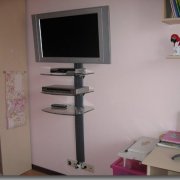
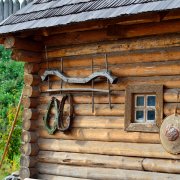
And where to get peralmutrovye paint for stucco? I want to update my stucco moldings.
As far as I understand, ordinary acrylic paints can be used to paint stucco moldings. I ordered stucco molding and decorative columns for Empire style, now I think I will also paint, otherwise white ones look like in a museum)
And why bother to paint a stucco molding?))